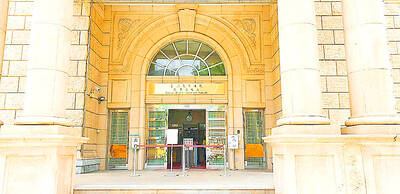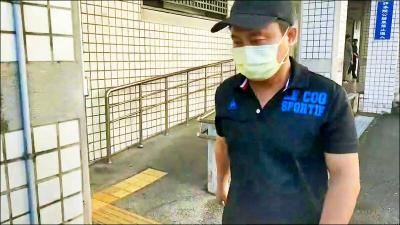Staff Reporter, in Asuncion
President Ma Ying-jeou (馬英九) said on Thursday that he was still negotiating with China about a plan to stop Taiwan and China from wooing each other’s diplomatic allies — what he calls his “diplomatic truce” strategy, but critics have dubbed it a “one-sided declaration.”
“If the diplomatic truce turns out to be a successful strategy, it might be possible that we won’t gain any more allies, but we won’t lose any either,” Ma said.
Ma said he understood that some people disagree with the strategy, but the government should still pursue the goal as it is in the interest of Taiwan.
He made the remarks at a press conference held in Asuncion on Thursday.
During his first state visit to attend yesterday’s inauguration of new Paraguayan President Fernando Lugo and today’s inauguration of the re-elected Dominican Republic President Leonel Fernandez, Ma took the opportunity to explain his ideas on the “diplomatic truce.”
Ma said he had gained support for the idea from the diplomatic community in Taiwan, US friends in think tanks, the legislative and executive branches and the country’s allies.
Presidential Office Spokesman Wang Yu-chi (王郁琦) said Panamanian President Martin Torrijos had praised the “diplomatic strategy” as a “wise decision” and Lugo called it the “correct direction” during their separate meetings with Ma over the last two days.
Taiwan has 23 diplomatic allies — mostly small nations in Africa, Latin America and the South Pacific — while about 170 countries recognize China.
After assuming office in May, Ma called for a diplomatic truce with China, saying both sides should not compete for recognition by offering large sums of money, a practice critics call “checkbook diplomacy.”
If both sides of the Strait can refrain from engaging in checkbook diplomacy, donations to less developed countries would be purely foreign aid and not part of a vicious competition, Ma said.
Taiwan and China’s checkbook diplomacy battle is often criticized by the international community, but giving donations to less developed countries is what Taiwan should do as it can help resolve problems derived from uneven global development, Ma said.
“As a member of the world, we are obliged to help other countries. Taiwan benefited from aid from the US and other countries in the past,” Ma said.

South Korean K-pop girl group Blackpink are to make Kaohsiung the first stop on their Asia tour when they perform at Kaohsiung National Stadium on Oct. 18 and 19, the event organizer said yesterday. The upcoming performances will also make Blackpink the first girl group ever to perform twice at the stadium. It will be the group’s third visit to Taiwan to stage a concert. The last time Blackpink held a concert in the city was in March 2023. Their first concert in Taiwan was on March 3, 2019, at NTSU Arena (Linkou Arena). The group’s 2022-2023 “Born Pink” tour set a

CPBL players, cheerleaders and officials pose at a news conference in Taipei yesterday announcing the upcoming All-Star Game. This year’s CPBL All-Star Weekend is to be held at the Taipei Dome on July 19 and 20.

The Taiwan High Court yesterday upheld a lower court’s decision that ruled in favor of former president Tsai Ing-wen (蔡英文) regarding the legitimacy of her doctoral degree. The issue surrounding Tsai’s academic credentials was raised by former political talk show host Dennis Peng (彭文正) in a Facebook post in June 2019, when Tsai was seeking re-election. Peng has repeatedly accused Tsai of never completing her doctoral dissertation to get a doctoral degree in law from the London School of Economics and Political Science (LSE) in 1984. He subsequently filed a declaratory action charging that

The Hualien Branch of the High Court today sentenced the main suspect in the 2021 fatal derailment of the Taroko Express to 12 years and six months in jail in the second trial of the suspect for his role in Taiwan’s deadliest train crash. Lee Yi-hsiang (李義祥), the driver of a crane truck that fell onto the tracks and which the the Taiwan Railways Administration's (TRA) train crashed into in an accident that killed 49 people and injured 200, was sentenced to seven years and 10 months in the first trial by the Hualien District Court in 2022. Hoa Van Hao, a